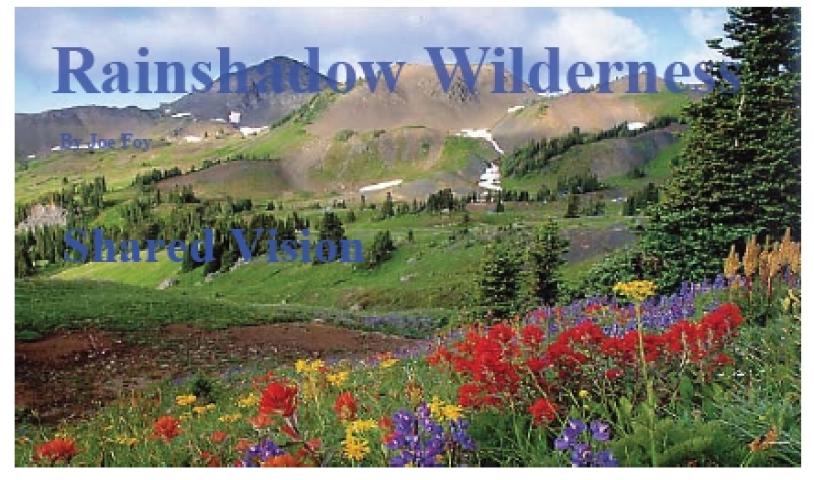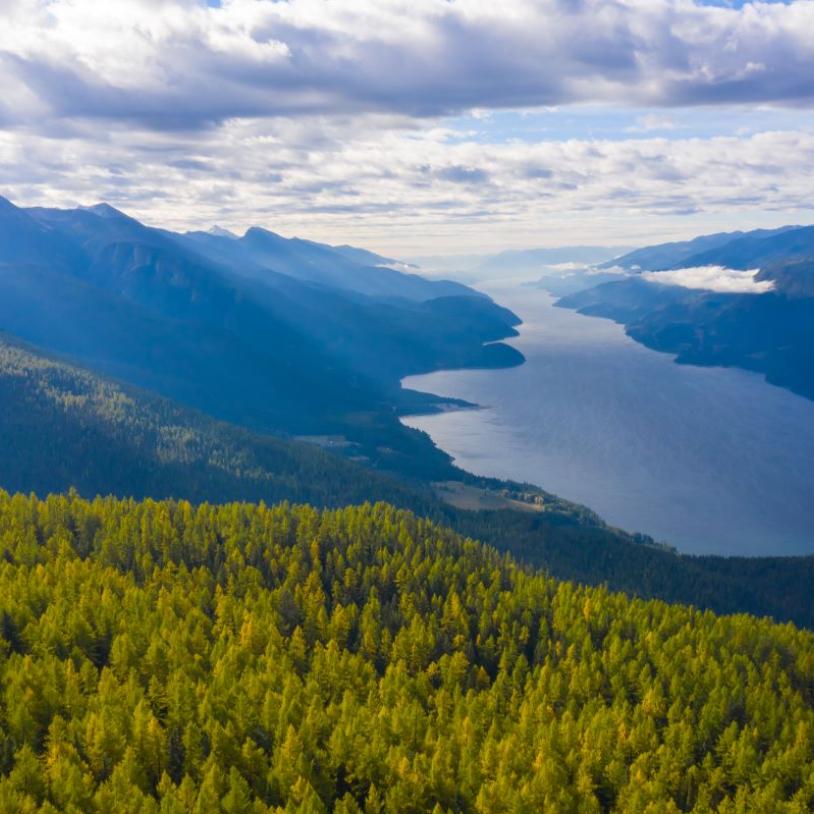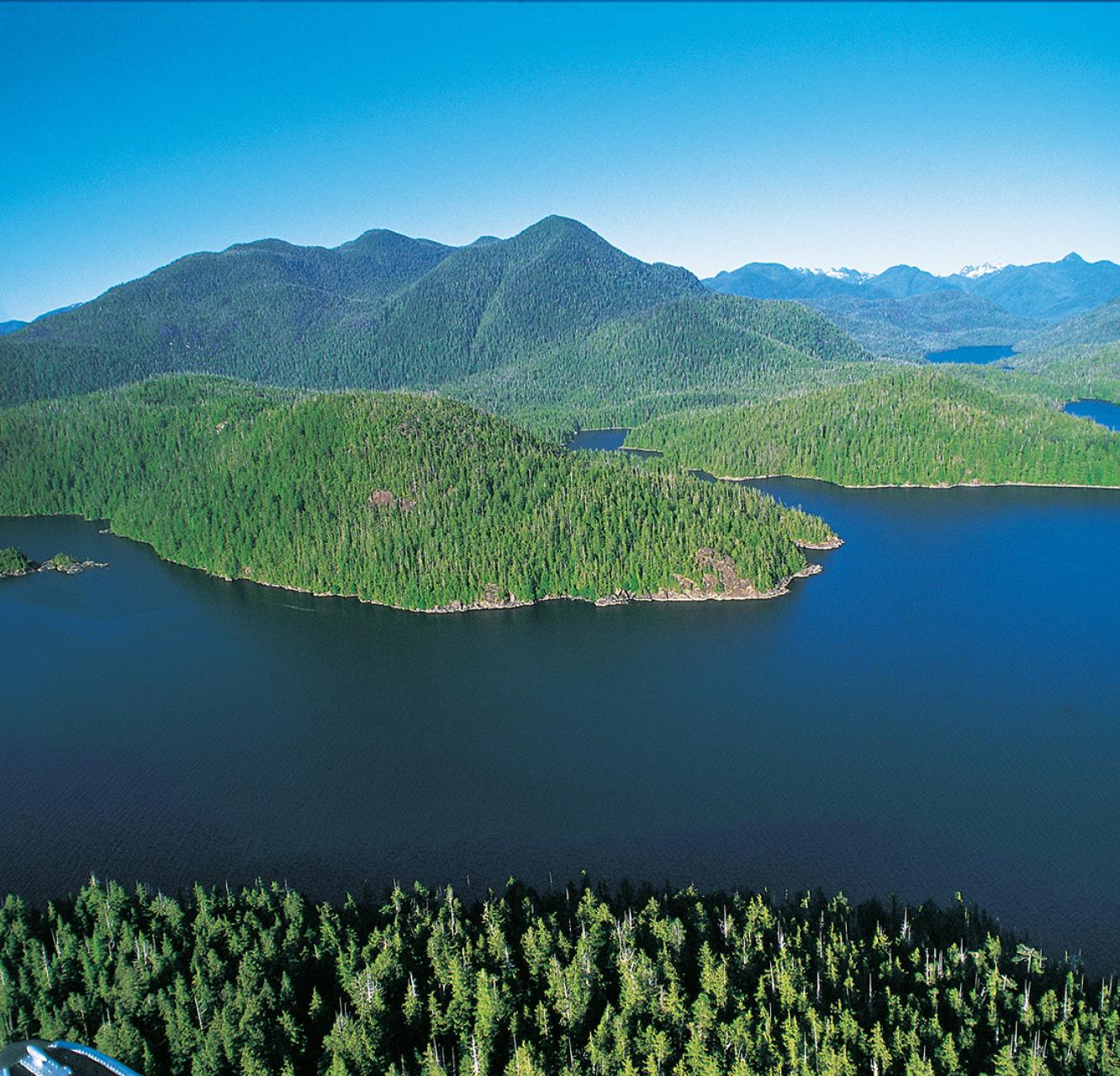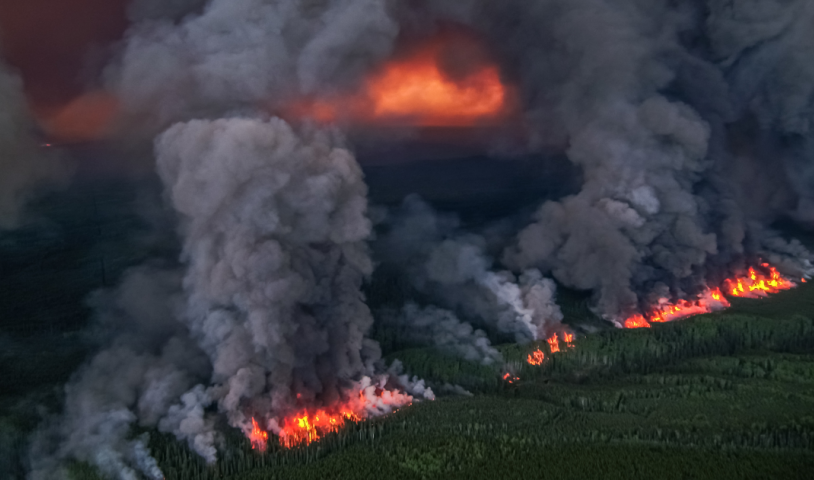Rainshadow Wilderness ‑ Shared Vision
Monday, September 14, 1998
September 15th, 1998
By Joe Foy
Boy it was hot! My wife Cristina and I and my son Joe were in the Fraser Canyon community of Lytton gasping like fish out of water in the intense heat. It was the end of July and a breeze was blowing through town - but even this wind was hot, like the breath of a dragon. A haze of forest fire smoke hung in the sky. We were in B.C.'s rainshadow country and it felt great -- like a home-coming of sorts.
More than a decade ago I had begun my conservation work here, in the nearby 110,000 hectare Stein Valley. Back in 1985 and 1986 the future looked dark for the Stein - the largest remaining unlogged valley in southwest B.C. The B.C. government had given the go-ahead to clearcut the valley's forests and Fletcher Challenge Timber Co. was looking to hire a road building crew. Fletcher Challenge owned a big lumber mill at Boston Bar and wanted to push a logging road right up the valley.
The Stein was not just any valley - the Stein was and is a beautiful and spiritually powerful place. It's part of the homeland of the Lytton and Mt. Currie First Nations. The combined effect of the determination of the First Nations people to protect their valley, with the support of grass roots groups like the Wilderness Committee and the Stein Alliance as well as the support of tens of thousands of British Columbians, combined with the Stein's own mysterious power eventually proved to be too much for the timber industry and government to withstand. The Stein Valley Nlaka'pamux Heritage Park was jointly proclaimed by the Lytton First Nations and the B.C. government in 1995 -- safe forever from the chainsaw and bulldozer.
Standing on the main street of Lytton I looked up to the peaks of the Stein country and remembered past camps in the sacred valley, the smell of sage and ponderosa pine, the sounds of drumming and ancient song, the red pictographs on the canyon walls, the grizzly bear foot prints on riverside sandbars. I thought to myself, this country is so different from the rainforests on the west side of the mountains, yet is just as beautiful, full of life and mysterious in its own way.
Back on the road we wound our way down the Fraser Canyon. The little community of Siska is marked with a roadside sign inviting visitors to come on in and see their museum and art store. We turned off the highway and pulled in front of the store. This is the ancestral home of the Siska Indian Band who are part of the Nlaka'pamux Nation. The Siska people want their valley, the 7,400 hectare Siska Watershed, preserved just like the Stein Valley. The people have even published a Siska Band Heritage Park Declaration, signed by village councillors and elders. Inside the store a crumpled Save the Siska Valley petition, full of signatures lay on a table.
Talking to people in the Siska art store it was easy to see why the valley is so important to the Siska Indian Band. The Siska is last remaining unlogged river valley between the mouth of the Fraser and Lytton. In very hot years (like this one) migrating sockeye salmon gather at the mouth of Siska Creek to clean their gills and cool down in the fresh mountain waters, before continuing their journey upriver on the Fraser to their spawning grounds. In logged over valleys creeks heat up and turn muddy brown when the protective forest cover has been removed. When the water gets too hot, migrating salmon die from heat exhaustion - this actually happened in the supper-logged, superheated Fraser River watershed all this summer putting entire runs under threat of extinction.
Like the Stein, the Siska Valley is full of signs of generations of responsible use by the Siska people. Live cedar trees show scars where bark was removed to create ropes and nets, without killing the tree. Old trails, fire pits and cache pits tell of ancient hunting parties. The watershed is still rich in wildlife from grizzly bear to elk. Also like the Stein, the Siska has been targeted to feed the hungry Boston Bar mill. J.S. Jones Timber Co., the current owner of the mill have started building road into the Siska Valley.
The Siska people have gone to court to stop them, but the wheels of justice move slower than the treads of the bulldozers -- the road is pushing into the pristine Siska over the cries of her people. Its like that all over Rainshadow country these days. B.C. public attention in the 90s (my own included) has largely been focused on the endangered rainforest wilderness areas. On the dry side of the Coast Rainshadow Wilderness Mountains the forest companies have been worming their way into the last wild valleys with little organized resistance -- but that's about to change.
From Lytton to Lillooet to Gold Bridge, people are saying enough is enough. The Seton Lake Indian Band of the Stl'atl'imx Nation have come together and demanded that Ainsworth Lumber Co. abandon plans to log the south shore of Seton Lake, an important cultural area and wildlife sanctuary. The Yalakom Ecological Community have called for an end to plans to log the Shulaps Basin, a local hiking area rich in wildlife. In fact fully 40% of the Lillooet Region is either park now or has been proposed as future park land. However, the timber companies are rushing to extinguish the 40% wilderness preservation dream before it becomes a reality. Most of the remaining pristine forest valleys of the Lillooet Region are scheduled to be roaded and logged within the next two years.
One slight glimmer of hope may be the B.C. government's Land and Resource Management Plan (LRMP) now being put together by a group of local people. The problem is that this planing table, which has been meeting for a year is so-far dominated by logging companies and while the participants meet, the chainsaws continue to level some of the best remaining Rainshadow Wilderness areas.
We waved goodbye to our Siska friends and headed down the highway again, back to our home in New Westminster. "It doesn't look good, does it," said Cristina. "No, it doesn't, but don't write off the Rainshadow Wilderness areas yet," I said, thinking of the Stein Valley, "There is power in those mountains and in the hearts of these people that is both mysterious and awesome -- lets get to work!"
The Wilderness Committee has just published a full colour, eight page information report on the endangered Rainshadow Wilderness areas, and what you can do to help save them.
For your free copy (or copies), phone us at 604 683-8220.





